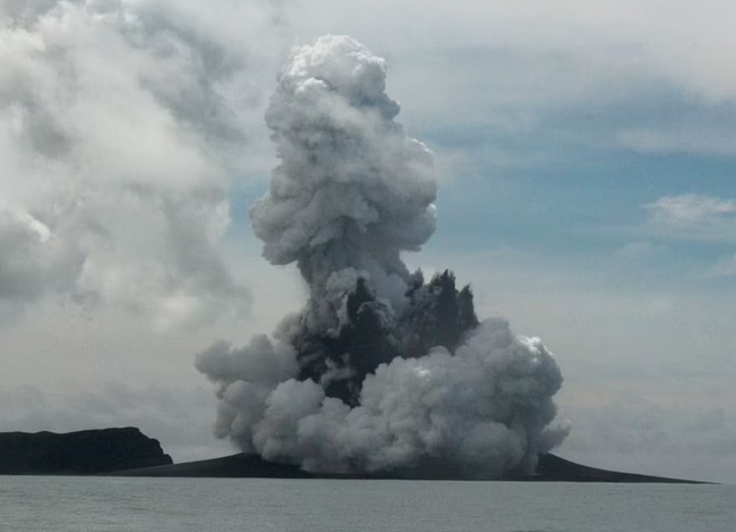A viral claim suggesting that explosion at the Hunga Tonga Hunga Ha'apai volcano was a nuclear explosion has surfaced on social media. The volcanic explosion, which took place on Jan. 15, 2022, had sent tsunami waves across the Pacific Ocean.
NASA researchers estimated that the power of the explosion was equivalent to '10 megatons of TNT,' which is 500 times more powerful than the nuclear bomb dropped in Hiroshima in 1945.

Was It Caused by a Nuclear Explosion?
The underwater explosion which was visible from the space caused a 7.4-magnitude earthquake causing up to 50ft tsunami waves crashing into the Pacific island nation of Tonga on Saturday.
Speaking to NPR, the chief scientist at NASA's Goddard Space Flight Center, James Garvin said that they come up with a number that's around 10 megatons of TNT equivalent. "If the past precedent for volcanic eruptions in this kind of setting has any meaning at all then we won't have another one of these explosions for a while," he added.
However, despite the researchers and authorities stating that it was a volcanic explosion, conspiracy theorists believe it to be a nuclear blast.
A video which surfaced on social media claims to reveal a "white object" moving underwater just before the explosion. The low resolution clip was believed to be taken from a satellite footage.
"Maybe they were testing the strength and depth of a nuclear explosion at Tonga to see the effects of the tidal wave. They may have to increase the next bomb. Or reposition it. They sure did pick an out-of-the-way place though. But somebody still caught it on camera," tweeted a user.
"You know that hunga Tonga was a underground nuclear explosion. Ain't no real volcano for real exploding like that nowadays. Some @bullshit fr," wrote another.
Here is the Truth
Debunking the claim made by the conspiracy theorists, Reuters stated that there was no evidence of a nuclear blast.
Speaking to the outlet, Dr Simon Proud, research fellow at the National Centre for Earth Observation (NCEO), University of Oxford said that the immediate eruption was captured by three satellites.
"The immediate eruption was captured by the US GOES-17, Japan's Himawari-8 and Korea's GK-2A. It was also captured by a Chinese satellite (FY-4B) but that data is not public as the satellite is still undergoing post-launch testing. Several hours after the eruption various other satellites overflew the volcano," Proud said.
"The three satellites I mention above all show the same story: An incredibly powerful volcanic eruption that began at approximately 4am UTC. Slight cloud cover is viewable in images at 03:50 UTC. I suspect that is the beginnings of the eruption," he added.
Dr Proud said that the satellite data showed things that are expected to be seen post volcanic eruptions. "Sulphur dioxide and ash at very high altitudes. These would not be present from a nuclear bomb. These volcanic signatures have been seen both by the satellites above and by various other satellites (American, Chinese, Japanese, European, etc) in the subsequent days," he said.








